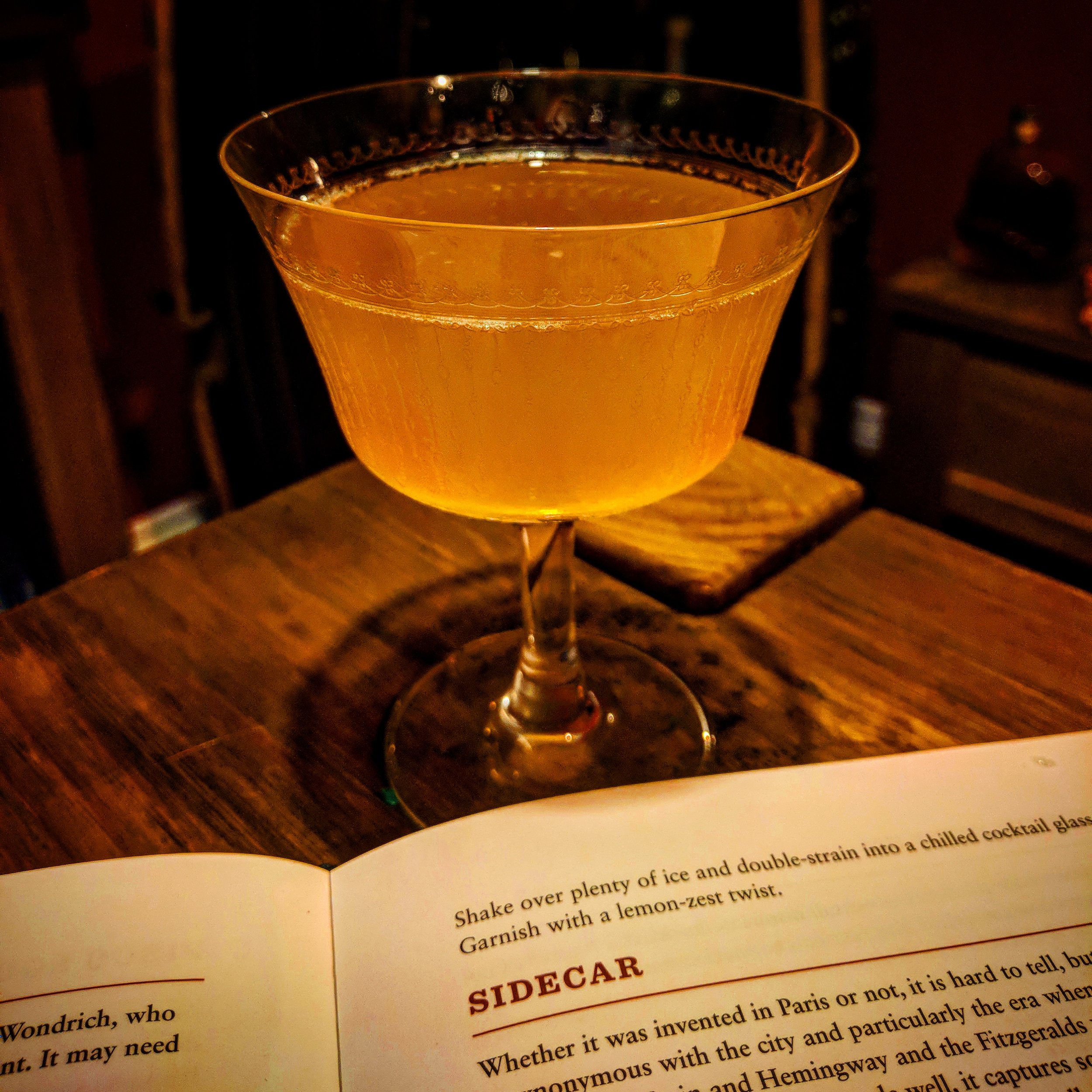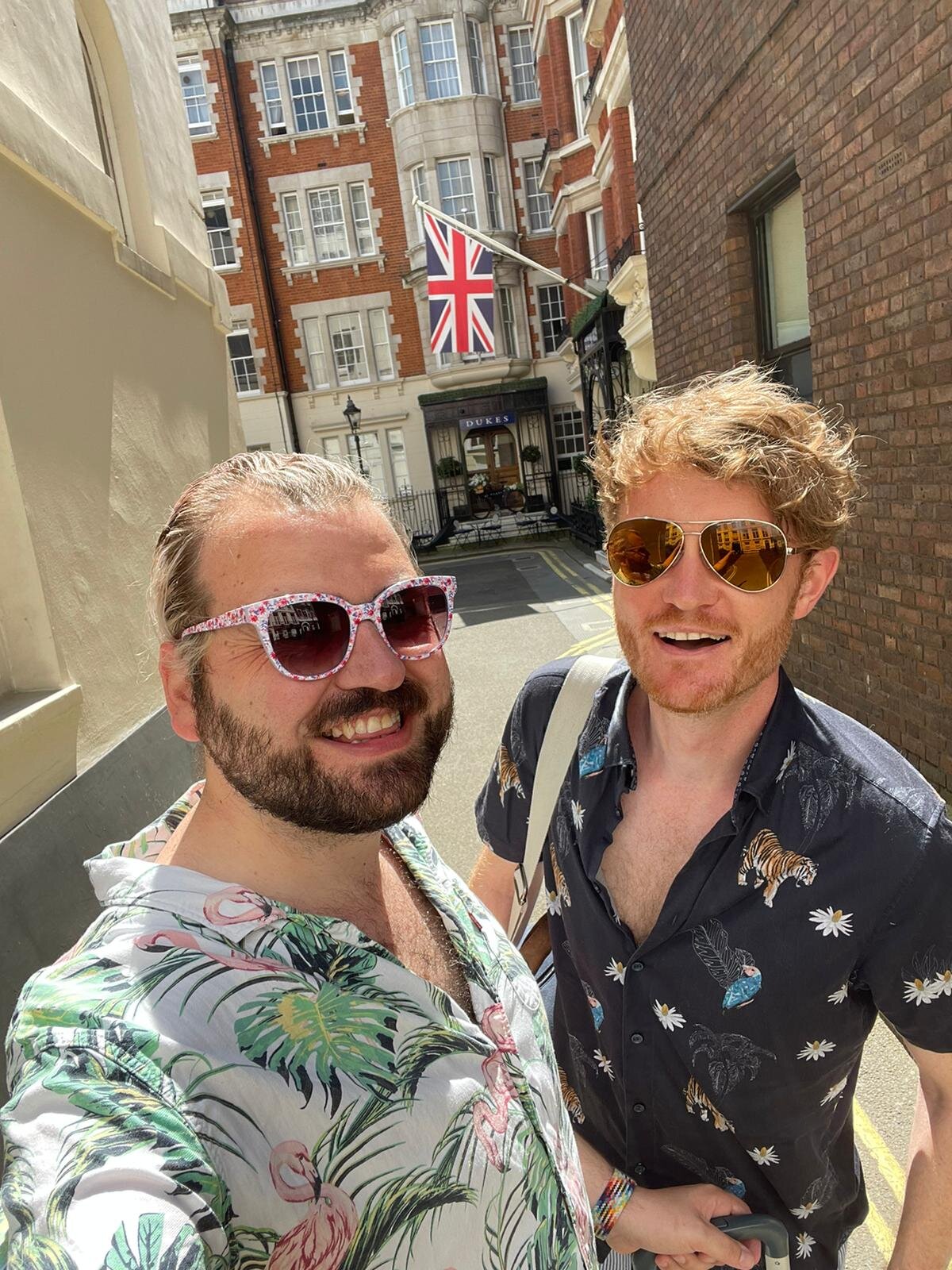Cocktail Hour: The Martini

Like many of my obsessions, my obsession with martinis began with James Bond. I don't think I can overestimate how much watching Bond movies had on me during my formative years. Somehow I escaped the misogyny and racism but I was, more than anything, hooked by the exotic travel. I've made it my mission (sanctioned by M or not) to visit as many of the places Bond has been to as I can. A 007 connection has been the reason behind several of our holidays - almost as many as 'they have a Disneyland' has with Antony.
When I graduated from the Bond films to the books, I became even more fixated on the character's accoutrements: the cars, the clothes, the food, the drinks - combined, they maketh the man. Bond's actually not that well-rounded a creation when you stop to think about him. But what he drives, wears, eats and knocks back (in dangerously high quantities) says a lot about him.
So: a martini, shaked not stirred.
Let's just get this out the way now: there is no reason, beyond the foibles of fashion, for the vodka martini to exist. Yes, Bond usually drank vodka in the movies but that was because of lucrative product placement deals. True, gin was well on its way out of fashion by the early 1960s (largely due to massive advertising campaigns from vodka brands) but just imagine what might have happened had the cinematic James Bond been a gin drinker! The decline in gin sales could have been arrested and we wouldn't have had to wait until the last two decades for gin to be 'cool' again. Maybe.
Cool or not, gin is where it's at nowadays. The original Vesper martini (from the 1953 novel Casino Royale) had a small volume of vodka (Ian Fleming was trying to give Bond a modern edge), but it was outmatched 3:1 by gin. Anyone who has read Casino Royale or seen the 2006 film adaptation knows there's a lot more to a Vesper martini, both in terms of ingredients and its preparation. Most famously, there's an aperitif called Kina Lillet shaken into the mix. This hasn't been made for decades and the Lillet Blanc you can get (widely available, check Amazon) makes a very decent martini, although it is a trifle sweet.
Whilst I am just as fastidious as Bond in terms of martini preparation, I like to keep it simple with the ingredients. You need just two:
Gin
Vermouth
If you're feeling fancy you can throw in some olives or a twist of lemon. They both add a distinctly different piquancy but neither drastically alter the fundamental flavour of the drink - unless you go overboard, and this would be a crime.
Before you head out to the shops, a few words on the gin. Now that gin is definitely back 'in', there's an awful lot of snobbery around it. Most of this snobbery originates from people who eliminate the flavour of gin almost entirely by dousing it in tonic water. In other words, they don't really like gin that much but they're pretending to. Now I like tonic water, but I like gin more. A G&T in our house is usually 1:1 gin:tonic.
So what gin should you buy?
There's always a bottle of Bombay Sapphire chez Lowbridge-Ellis. It's unabashedly crowd-pleasing and a lovely drink on its own or splashed with tonic. But in my view, it makes a rubbish martini.
Instead, buy a gin which is, dare I say it, a bit on the basic side. Go for something where juniper is to the fore. You don't want something with a hundred botanicals. As long as you keep it simple, and somewhere in the mid price range, you can't really go wrong. Any of these you will be able to find on supermarket shelves: Tanqueray, Hendrick's, Sipsmith. I have absolutely nothing against the cheaper end: brands like Beefeater and Gordon's (the latter was Fleming's/Bond's ingredient of choice). Supermarket own brands are usually a safe bet too, and I don't just mean M&S (which is delicious). The much vaunted ALDI £10 gin is almost worth the hype. My favourite gins for martinis are a little harder to get but are stocked in some supermarkets: Tanqueray No. Ten (£31.00*) and Brecon Botanicals (£23.00*). If you can't find them in store you will easily find them online.
In terms of vermouth, I'm definitely no expert. Noilly Prat is the posh-ish one but I use it sparingly. I find it can dominate if you're not careful and the yellow colour takes away the martini's mouth-watering clarity. Ignore the photo at the top of this page - a classic martini should be clear (like the photo at the bottom of this page), not orange, yellow or any other colour. Martini Bianco is my top choice. There's a reason the brand Martini is synonymous with the martini drink, whether Mr Alessandro Martini really did invent the martini itself or not (like with most cocktail lore, including the many possible origins of the word 'cocktail', the jury's out).
So, when you've got your 2 ingredients, what next?
1. Chill the glass you're using by sticking it in the freezer. A classic martini glass is preferable (like the one in the image below). They are usually a quid or less in the supermarket. Well worth it. Before sticking it in the freezer I always swill cold water in the glass. Even if you just leave it in the freezer for a couple of minutes, swilling with water will allow a thin layer of ice to form. It keeps the liquid cool and makes it look cool too.
2. Put gin and vermouth in a cocktail shaker filled up to around a third with large ice. If you don't have a cocktail shaker, use a measuring jug or something (but if you're read this far, I'm willing to bet you own a cocktail shaker). I tend to go for a 4:1 gin:vermouth ratio. E.g. 60ml:15ml. For many, this is far too much vermouth. For others, it's far too much gin. You will need to experiment here. Noel Coward, the gay playwright and wit (who, incidentally, was also a great friend of Ian Fleming) famously said: "A perfect martini should be made by filling a glass with gin, then waving it in the general direction of Italy." So, not a fan of vermouth then. The late great Roger Moore was a fan of the martini, despite never ordering a martini on screen in any of his seven Bond adventures. However, like Coward he limited the vermouth, recommending just swilling the glass and cocktail shaker with vermouth and tipping what didn't stick down the sink. Sounds like a waste to me, but I think I'm in the minority. The amount of vermouth has steadily declined across the history of the martini. Many modern recipes suggest a 5:1 gin: vermouth. Give it a whirl. See what you prefer.
3. STIR, DON'T SHAKE. I know this is 007-heresy, but shaking breaks up the ice too much and dilutes the drink. On the plus side, shaking does make it ice cold, but so does stirring it for 30 seconds (with a spoon if my bet about the cocktail shaker was somewhat far off the mark and you don't have a cocktail spoon/stirrer either). The only reason Fleming made Bond insist on shaking was to make what is, to all other intents and purposes a very sophisticated drink, more brutish.
4. Strain the contents of the shaker/jug into the chilled martini glass. I don't know what you're going to use if you don't have cocktail equipment. Maybe a leftover tea bag or something. I dunno - improvise! Or just buy a cocktail kit!
5. Drink it. Slowly. A perfectly made martini is a beautiful thing to behold. It's so simple, on the glitteringly clear surface at least. And yet, it's so easy to get it wrong. Getting it right, for your palette, might take a few attempts. But keep going. Just be warned: this is a strong drink. One is never enough and neither is two. However, three is usually too many. Except if you're James Bond, but he's a fictional character so he only has a fictional hangover to deal with.
*All prices are approximate and relate to 700ml bottles. No, we aren't sponsored by any gin manufacturer, although if any would like to sponsor us you should definitely get in touch!





